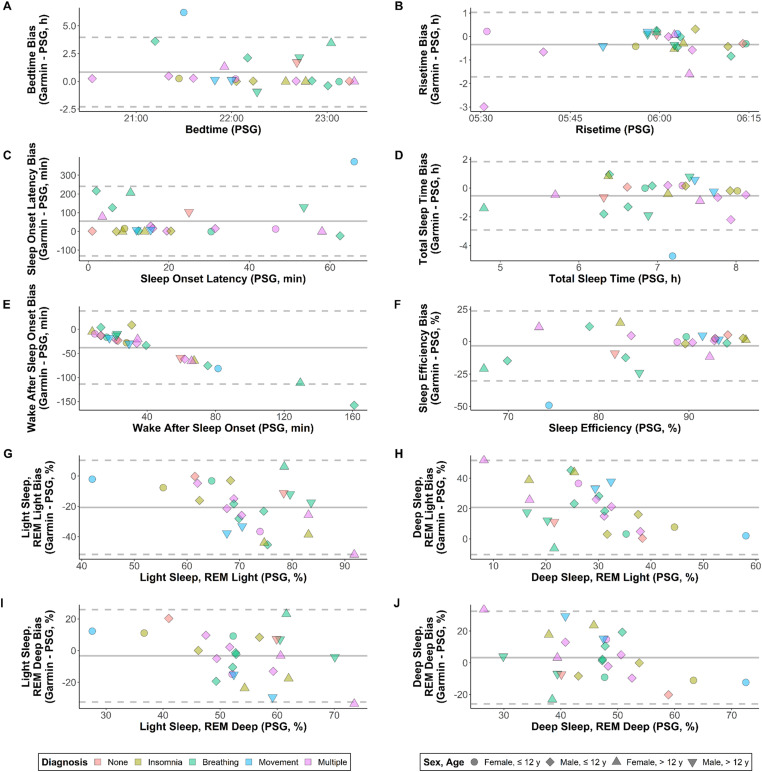Figure 2.
Bland-Altman plots showing patterns of bias (y-axis) relative to measured values from polysomnography (PSG; x-axis), with color- and shape-coding to show trends among diagnostic and demographic subgroups. Solid grey lines are mean bias, and dashed grey lines are limits of agreement. Variables shown are (a) bedtime, (b) risetime, (c) sleep onset latency, (d) total sleep time, (e) wake after sleep onset, (f) sleep efficiency, (g) percent of time in light sleep when classifying rapid eye movement as light (REM Light), (h) percent of time in deep sleep for REM Light, (i) percent of time in light sleep when classifying REM as deep (REM Deep), and (j) percent of time in deep sleep for REM Deep. For sleep onset latency and sleep efficiency, N = 24 rather than 25, due to the Garmin monitor predicting bedtime before “lights out” for one participant.

